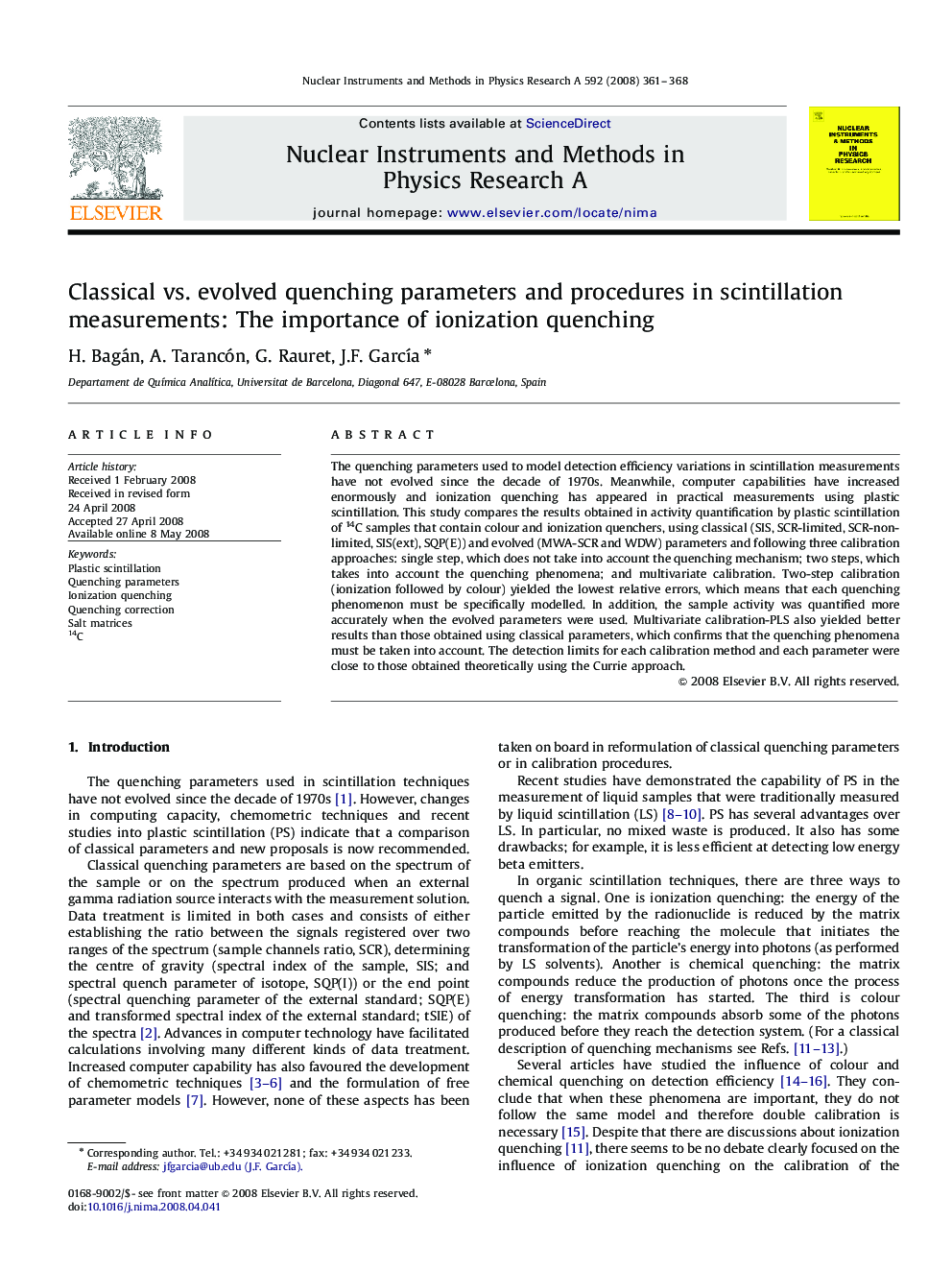| Article ID | Journal | Published Year | Pages | File Type |
|---|---|---|---|---|
| 1829234 | Nuclear Instruments and Methods in Physics Research Section A: Accelerators, Spectrometers, Detectors and Associated Equipment | 2008 | 8 Pages |
Abstract
The quenching parameters used to model detection efficiency variations in scintillation measurements have not evolved since the decade of 1970s. Meanwhile, computer capabilities have increased enormously and ionization quenching has appeared in practical measurements using plastic scintillation. This study compares the results obtained in activity quantification by plastic scintillation of 14C samples that contain colour and ionization quenchers, using classical (SIS, SCR-limited, SCR-non-limited, SIS(ext), SQP(E)) and evolved (MWA-SCR and WDW) parameters and following three calibration approaches: single step, which does not take into account the quenching mechanism; two steps, which takes into account the quenching phenomena; and multivariate calibration. Two-step calibration (ionization followed by colour) yielded the lowest relative errors, which means that each quenching phenomenon must be specifically modelled. In addition, the sample activity was quantified more accurately when the evolved parameters were used. Multivariate calibration-PLS also yielded better results than those obtained using classical parameters, which confirms that the quenching phenomena must be taken into account. The detection limits for each calibration method and each parameter were close to those obtained theoretically using the Currie approach.
Related Topics
Physical Sciences and Engineering
Physics and Astronomy
Instrumentation
Authors
H. Bagán, A. Tarancón, G. Rauret, J.F. GarcÃa,
